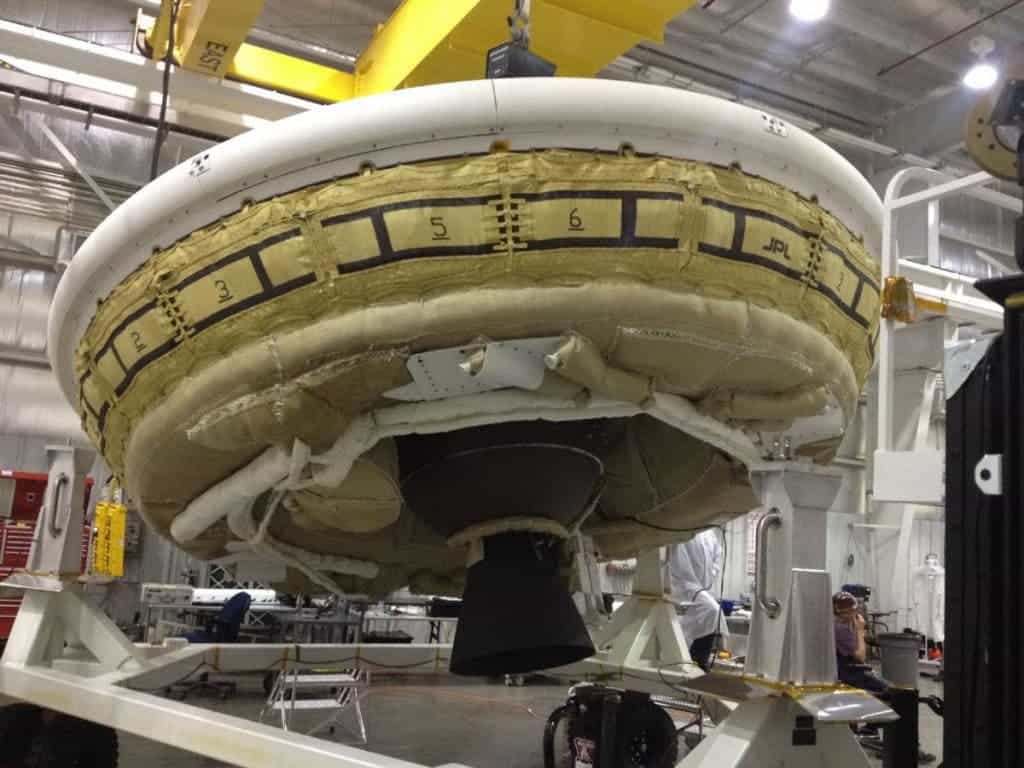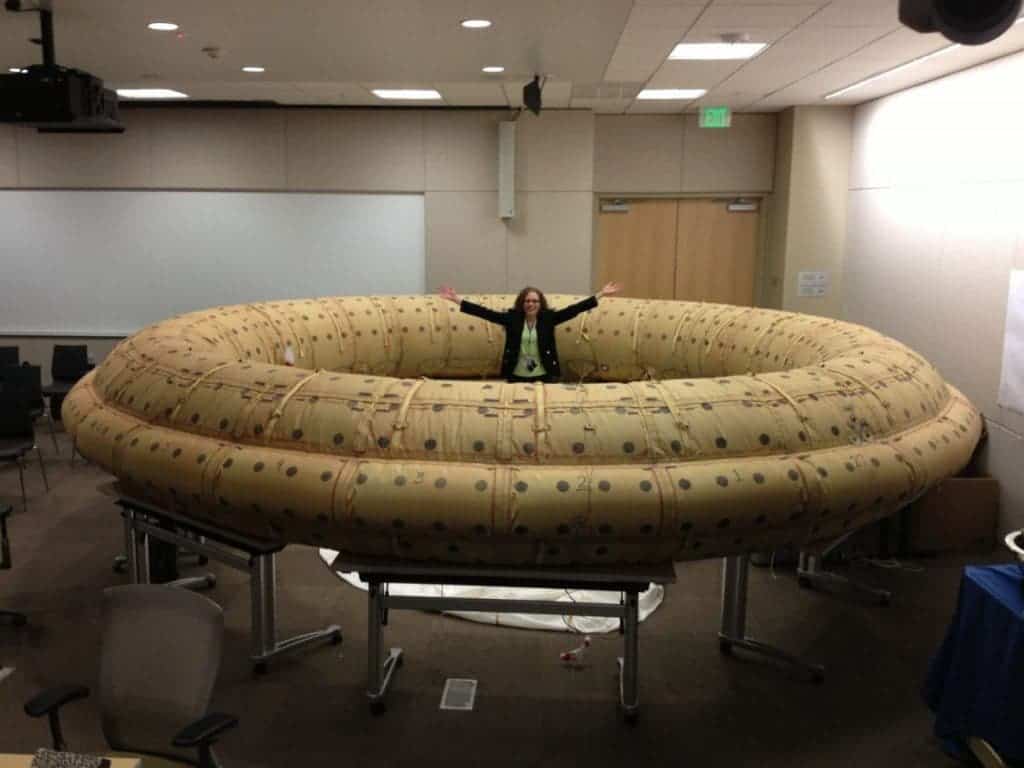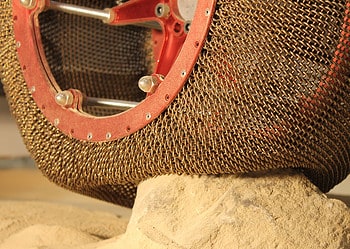Today, NASA is performing a new test round for its low-density supersonic decelerator (LDSD), which is basically a giant stop and brake system for heavy duty crafts landing on Mars. Both the Curiosity Rover (2012) and the twin Viking probes (1976) used the same parachute to slow their supersonic descent and land safely on the Martian surface. These parachutes, however, can’t handle more than a tone worth of payload, and if humans are ever to touch the Red Planet’s surface they’d need to land 15 to 20 tonnes of payload – in other words, we’re gonna need a bigger parachute. The LDSD system deployed by NASA and slated for a test run above the Pacific might be the technology we’ve been waiting for.
**UPDATE: because of unfavorable ocean conditions, NASA’s LDSD test vehicle launch was postponed. More details here.

Landing a probe, rover or craft of any kind on Mars is no trifle. The atmosphere of Mars has less than 1% the thickness of Earth’s atmosphere but it’s a lot thicker than that of the Moon. This means we can’t use the same deceleration and touch down procedures we’ve become used to for the lunar landings, nor for Earth-bound atmospheric re-entries. Yes, a parachute is common for landings on Earth and Mars, but since the atmosphere is much thinner the drag is proportionally lower. To increase air resistance, the LDSD uses an inflatable doughnut-shaped airbag made from Kevlar. This comes in two versions: the 6-meter in diameter SIAD-R meant for landing robots like the next rover bound for Mars, and the 8-meter SIAD-E for human missions.

The SIAD-E is the most interesting to us. According to models made by NASA, the SIAD-E should slow down a manned craft, like the Orion capsule, from 2,600 mph (x3.5 speed of sound) to 1,400 mph in under three minutes. At this point, a parachute 30.5 meters in diameter deploys for a slow landing.
The LDSD is slated for its test run off the coast of the U.S. Navy’s Pacific Missile Range Facility in Kauai, Hawaii on Tuesday, June 2 between 1:30pm and 3pm ET (June 3, 3.30am and 5am AEST). To simulate a Martian landing, NASA is deploying the giant saucer deceleration system in the stratosphere, where the atmosphere is a lot thinner than at ground level. First, a high-altitude helium balloon will carry the test vehicle to an altitude of 120,000 feet. At this point, the balloon releases the vehicle which should free fall for a couple thousand feet before it turns on its rocket boosters to climb to an altitude of 180,000 feet and speeds of 2,880 mph. This is the closest we can get to a Martian-like descent. Once here, the SIAD-E inflates and goes about the sequence described earlier.

This is the system’s second test. Last year, the SIAD-E was deployed for the first time. The craft splashed off the Hawaiian coast in the Pacific and was retrieved completely intact, which partially made it a successful run. I said partially, because immediately after the parachute was deployed it got ripped into smithereens. This time around, NASA used a parachute made out of another material. It was also reinforced and restructured so that if a part happens to shred, the rest won’t follow and will remain intact.

“We saw things that we’ve never seen or imagined existed before,” LDSD lead researcher Ian Clark, with NASA’s Jet Propulsion Laboratory in Pasadena, Calif., told reporters during a conference call Monday.
“We saw a much more dynamic and much more turbulent parachute inflation than we had ever known … things like the suspension lines exploding like lightning, moving in a very chaotic manner all over the place,” Clark said.






